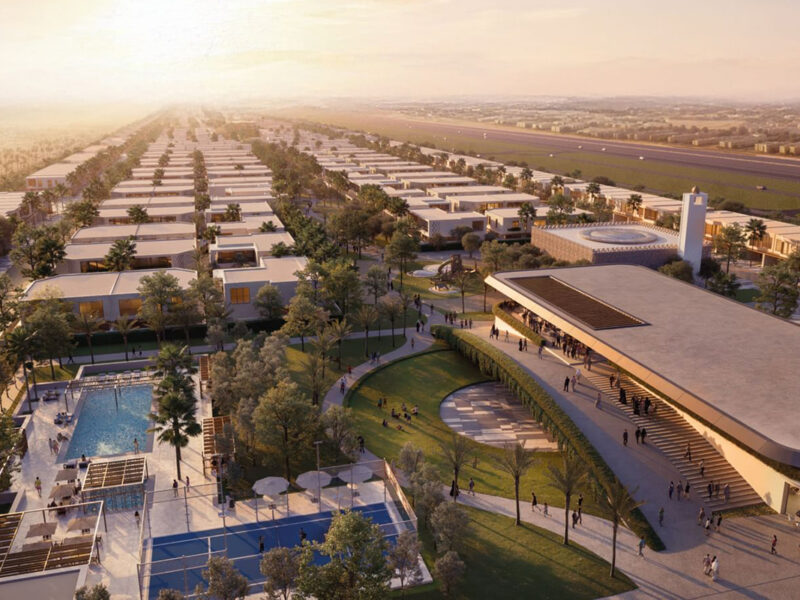The question of energy conservation in buildings can be approached in two different but complementary ways. First and foremost, it is important to enforce mandatory compliance with stringent and up-to-date building energy efficiency standards such as the American Society of Heating, Refrigerating and Air Conditioning Engineers’ (ASHRAE) Standard 90.1 or equivalent.
This compliance is at the heart of most green building initiatives such as the US Green Building Council’s Leadership in Energy and Environmental Design (LEED) rating system. But it is perhaps more important to diagnose efficiency issues in existing buildings and address them via the implementation of specific energy conservation measures. This process is generally termed an energy audit.
Energy audits: the theory
Energy audits aim to analyse the energy consumption in existing buildings, taking into account the building structure, the energy consuming equipment and occupants’ usage profiles. Of course, a comprehensive energy audit should also consider occupant comfort parameters such as temperature, humidity, air quality and lighting.
The basic principle behind every energy audit is simple: to compare the actual and ideal energy usage, diagnose problem areas and make a financial assessment (payback analysis) of different solutions. The source of the actual usage values can be, for instance, utility bills or by a specific measurement campaign that is set up for a certain period of typically a few weeks in order to obtain a representative consumption pattern.
Furthermore, often a theoretical model of the building is established and used as predictive tool to assess energy conservation measures. The most widespread type of audit, herein referred to as ‘standard audit’, relies on theoretical values derived from simplified energy balances. The more sophisticated ‘comprehensive audit’ opts for a dynamic simulation model of the building, its equipment, usage profiles and the external climate. A number of commercial building thermal modelling software tools exist and can be used for this purpose.
Simplified energy balance
The most straightforward way to calculate the theoretical average daily cooling energy consumption of a building is by the simplified formula (see the image on next page).
• U is the thermal transmittance of the external walls of the building expressed in kW/ºC;
• ΔΤ is the daily average temperature differential between the internal (conditioned) space and the external environment expressed in ºC;
• f is the daily average free cooling provided by passive cooling systems (if applicable) expressed in kWh;
• η is the net overall efficiency of the building’s cooling system.
The procedure involves calculating a set of average representative energy consumption ratios, which can then be used to characterise the building in comparison to a large database of carefully selected and categorised existing cases. Examples of so-called ‘representative ratios’ include: average energy consumption per occupant and average electricity consumption per area of occupied space.
In order to constitute a valid reference benchmark the database of existing cases must include a large number of different buildings. The database is typically subdivided into classes’. A class is characterised by a set of parameters such as the building’s purpose, age and size. These characteristic parameters are homogeneous within a class.
Each class is characterised by a set of average representative ratios. When a new building is evaluated against the benchmark, it is first categorised in the appropriate class then its representative ratios are compared to those other buildings in the class to which it belongs.
The extraction of the relevant data for the purpose of a benchmarking audit is usually straightforward and does not require anything beyond examination of readily available utility bills and, perhaps, a brief interview with the building manager. Based on the benchmarking results, the audit report may then suggest a more detailed study if a significant bias is observed between the building and its class.
The premise of this formula is that over a typical day the system will provide a cooling effect that exactly compensates for the building’s thermal gain from the environment. It does not account for the dynamic (eg hourly) variations of the thermal state of the building, for that reason it is called a static balance.
Building interactions
Energy consumption patterns are the outcome of complex interactions between the building structure, equipment, occupants and external environment. Of these four systems the building structure is probably the most challenging to properly analyse and characterise in the course of an energy audit. For instance, a comprehensive audit requires no less than the quantitative characterisation of the dimensional and thermo-physical properties of every wall, partition, roof, window, and door. Understandably some of this data is hard to obtain, especially for older buildings, and will have to be estimated or approximated.
As for the equipment analysis it should, at the very least, enable the auditor to estimate average annual energy usage of major system components: space cooling/heating production and distribution, hot/cold water production and distribution, mechanical ventilation, lighting and elevators. Ideally, the equipment analysis will be sustained by measurements, enabling a thorough assessment of the equipment’s set-points and performance levels.
Building usage patterns are most reliably determined via utility meter interval data (if available) or utility bills, while complementary information can be inferred from occupant/operator interviews or building management system (bms) logs. Such complementary information will inform on details such as occupancy schedules and equipment setpoints.
Depending on client requirements or data availability, several levels of audit are possible. The main ones are:
• benchmarking audit;
• standard (diagnostic) audit;
• comprehensive (instrumented) audit.
The first stage of the audit involves gathering of all relevant data to establish a reliable and accurate energy consumption profile. In addition to a detailed examination of the building structure and the installed equipment, calculations and punctual measurements will be performed as needed. Naturally, any information leading to a better understanding of the usage quantities and patterns such as bms logs and utility bills should also be processed.
In the second stage of the audit, the data will be aggregated, analysed and interpreted. The analysis should lead to a complete understanding of the building’s usage patterns. From this understanding, it will be possible to infer a list of improvements.
The annual energy balance, which will be used to generate theoretical usage data, is usually performed for the whole building, although it is possible to improve accuracy by applying the method to thermally homogeneous building subdivisions or zones.
The gross annual air conditioning need depends on the thermal transmittance (insulation level) of the external walls as well as the temperature differential between the building’s internal temperature and the ambient external temperature. In the following formula:
Egross = 24U.DD
• U is the global building thermal transmittance expressed in kW/ºC;
• DD is the total annual cooling degree-days ie the sum over the reference year, of the average temperature differential of each day of the year, expressed in ºC.day;
• the factor 24 is used to convert degree-days to degree-hours, so that the end result (Egross) can be given in kWh;
• Cooling degree-day data may be based either on actual temperature measurements over the reference year or on average historical records.
The energy consumption of the water heating system is usually estimated by empirical methods such as the average temperature of the hot water or average usage per occupant. Once the theoretical energy consumption of the building over the reference year has been calculated, it is compared to the actual consumption by the use of utility bills and bms logs. If the discrepancy is significant, the hypotheses behind the theoretical estimate should be revised in order to reduce the error.
After the theoretical model has been validated against the actual data, it can be used as a predictive tool. The final stage of the audit involves the establishment of a prioritised list of conservation measures. For each measure, the audit report must provide:
• a detailed description;
• expected savings (kWh/year);
• expected financial impact of the savings ($/year);
• expected cost of implementing the measure ($);
• payback time (years).
Careful calibration
The power of a calibrated simulation model resides in the fact that, since all model parameters correspond to thermo-physical properties of the building or its equipment, once their ‘true’ value has been pinpointed via calibration, these values will not change over time, so the procedure need not be renewed.
Hence, a properly calibrated simulation model is a powerful predictive tool that can be used over the lifetime of the building to evaluate and prioritise energy conservation measures. Not to mention other more advanced applications such as hvac operational optimisation, energy budget prediction and allocation and virtual sub-metering.
After the completion of the calibration procedure, the assessment of conservation measures can begin. For each hypothetical measure an ‘alternate’ model is built that incorporates the suggested change/enhancement. The alternate model is then compared to the original (‘baseline’) model. Both models are run against climate/usage data for reference/typical year (typical climate data for many locations worldwide are readily available).
The outcome of this exercise is usually a surprisingly accurate estimate of the expected energy savings. At this point, one applies the same method as with the standard audit: estimate the financial impact of the conservation measure (upfront cost, future savings) and derive payback period, then establish a priority list where the measures are ordered according to decreasing payback periods.
During the first stage the auditor will try to obtain as much information as possible regarding the dimensional and thermal characteristics of major passive components such as walls and windows and the technical and financial parameters of all the major building equipment (heating, cooling, ventilation and hot water etc). Technical documents such as architectural and engineering plans as well as previous audit reports, if any, should be scrutinised. This information is used to build a detailed numerical model of the building.
No matter how much time and energy is devoted to the information gathering exercise, no theoretical model is perfect and calibration is an absolute necessity. The calibration exercise involves revising some of the internal parameters of the model (usually uncertain parameters are tied to ill-defined thermo-physical properties of the building or the equipment) in view of reducing the bias between the model output and actual measured data.
For this purpose, specific short-duration measurement campaigns may be organised, whereby a number of carefully selected significant variables that display high sensitivity to uncertain model parameters are measured at short intervals (5-60 minutes) over a period of several weeks.
The calibration process can be manual if the model parameters are adjusted by a simulation expert, or automatic if a numerical optimisation algorithm eg gradient descent is used to improve the fit between measured and modelled data.
Either way, the calibration process is iterative and complex, possibly even more complex than the preparation of the original model. Furthermore, measurement campaigns are costly and intrusive and must be carefully designed in order to be as short and effective as possible. Therefore, it is ultimately less expensive to entrust the task of preparing and calibrating a simulation model to experienced specialists.
Dr Afshin Afshari is a LEED Accredited Professional and the assistant general manager of SS Lootah Group subsidiary International Energy Group (IEG).








